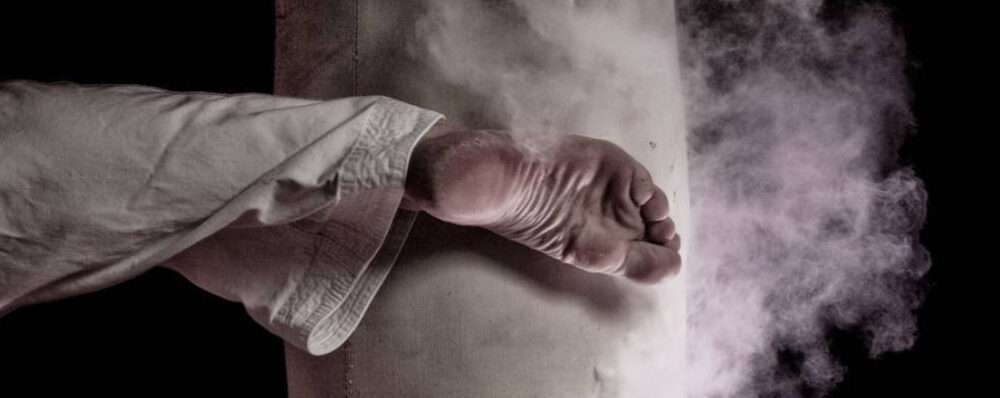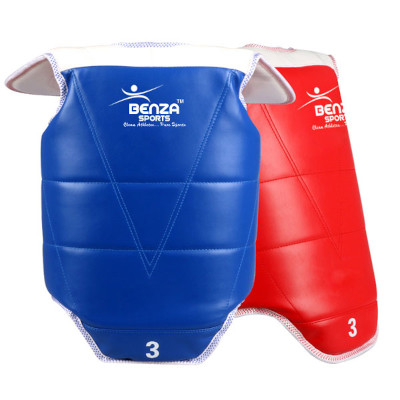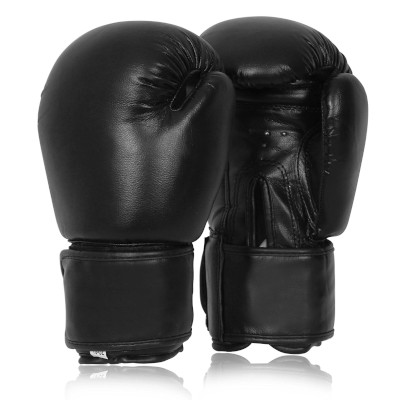
Basic Sparring Equipment Explained
Articles of Interest . Competition . Karate . Products . Questions . Training notes
Written by Sensei Mitch
Sparring with an opponent is one of the most fundamental aspects of any martial arts training. It is after all, the time to test all the skills, strength, speed and techniques you have learnt and put them all together. Nevertheless, there’s an important thing to consider first before rushing into a sparring session with your opponent and that is called protection. Although you may think you are going to the mat to fight, you need to remember that defense comes before attack and defense means protection of your body parts. In order to protect yourself from the blows of your opponent you need to choose the right sparring equipment.
Sparring with a skilled opponent is dangerous without wearing the right gear. Before you can decide anything, think, first what style of martial arts are you practicing? For instance, some styles do require exceptional protective gear and some do not. Therefore, it is necessary for you to know which is which. There are various types of martial arts gear and specialist sparring equipment available on the market, some of which are explained.
Martial art shoes add a degree of stability and comfort to your feet especially when practicing on areas where there are no mats. Wearing them also provides a more realistic feel of a real life situation on the streets compared to being bare footed as you normally are in the Dojo. It is better to choose foam dipped shoes because they are more slip resistant than the vinyl ones and comfortable on your feet while sparring whilst being able to maneuver properly without worrying about your footwork. The best martial shoes are those that are light weight and allow you to make jumps higher than you normally do.
Chest guards protect the upper part of your body. Although, they can be a bit heavy, the weight will have longer term benefits in that you will become stronger overtime as a result of carrying more weight. The chest guard is reliable for cushioning your opponent’s blows and psychologically allows your opponent to punch or kick you harder as they have more confidence that the blows will not hurt as much. A chest guard is often recommended for females when sparring in order to protect their breast area.
Hand gear basically allows you to punch your opponent with a lessor risk of hurting yourself and a lessor risk of hurting your opponent (too much). When punching your opponent it hurts when you hit their elbow or knuckles or generally anything else which is hard and it also hurts when you punch and your wrist twists on impact. Hand protection reduces the likelihood and severity of these painful moments if they should arise. There’s lots of choice when it comes to hand protection or gloves and choosing what’s best for you depends on the style of martial arts you are learning. Three distinct types of hand protection are the punching gloves which cover your entire hand much like a boxing glove, the sparring gloves where the palm is exposed and the grappling glove which are finger-less and often used in the mixed martial art sport.
Mouth guards are protective devices that protect the internal part of your mouth such as teeth, gums, and lips. It cushions the shock of a blow to your mouth that otherwise could result in a split lip because the lip has been forced back on to the teeth or missing teeth where the tooth has been knocked out. There are various types, styles and fashions of mouth guards and are typically made of silicone. For sizing, typically, you place the mouth guard in to your mouth and bite in to it to make an indent of your teeth as this ensures that the guard stays in your mouth while you are sparring.
Headgear protects your head! It is crucial to protect your head at all costs, because your head cannot endure or withstand the blows which other parts of your body can. Remember that your nervous system connects all of the important functions within your brain, so protect this at all costs! The designs of head gear nowadays actually protect most of the face as well. Small openings to enable you to see, breath and hear are designed in to the head gear with the rest of the head gear being padding. So, its common that when you take a blow to the head or face, the blow does not actually touch you, it actually only touches the padding.
Sparring is probably the most dangerous part of your training but also the most rewarding part. Because sparring is dynamic and unpredictable you never know when the next hit will come from. Getting bruises and injuries suck especially when they affect your future training sessions due to injury. So wearing the appropriate sparring equipment is a necessity in order to avoid injuries and bruises. If in doubt or you are unsure of what you might require, ask your instructor what he or she recommends.
This Post was originally posted on the Dojo site of Sensei Mitch, the site and URL were pirated when the domain name unintentionally lapsed. The Pirates continue to use the site content with impunity despite being notified of their intellectual violations.
This site uses Akismet to reduce spam. Learn how your comment data is processed.
| M | T | W | T | F | S | S |
|---|---|---|---|---|---|---|
| 1 | 2 | 3 | 4 | 5 | 6 | 7 |
| 8 | 9 | 10 | 11 | 12 | 13 | 14 |
| 15 | 16 | 17 | 18 | 19 | 20 | 21 |
| 22 | 23 | 24 | 25 | 26 | 27 | 28 |
| 29 | 30 | 31 | ||||
Awareness (52) Beliefs (22) Celebrity (38) Christmas (10) Confidence (13) critical thought (18) Diet (17) Entertainment (28) Exercise (16) Failure (13) Fitness (46) Freedom (21) Fun (50) Funny (41) Gun Control (16) Guns (20) Health (26) History (31) Holiday (49) Jokes (12) Karate (38) Kyokushin (28) Liberty (18) Mas Oyama (27) Meditation (21) News (66) Patriotic (17) Perspective (82) Politics (19) Questions (13) Quotes (39) Recruitment (13) Religion (24) Self-Control (11) Self-Defense (48) Site News (10) Sparring (19) State of Mind (29) Style (17) Success (18) Technique (28) Training (111) Video (49) Weapons (13) Zen (26)




Leave a Reply